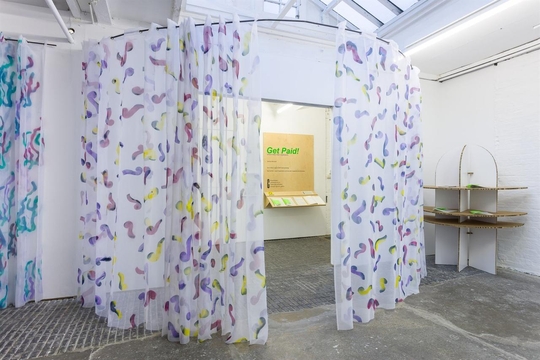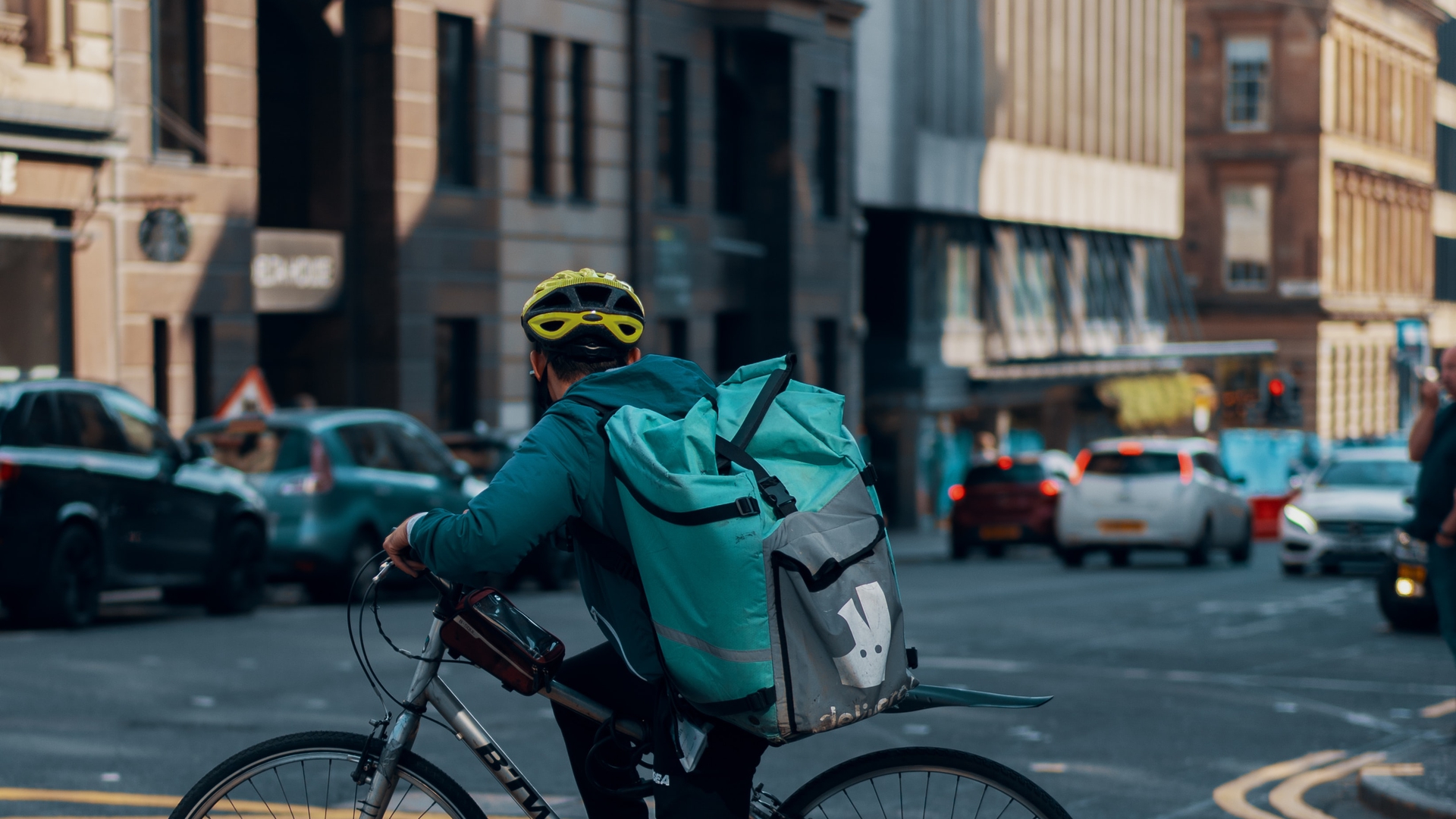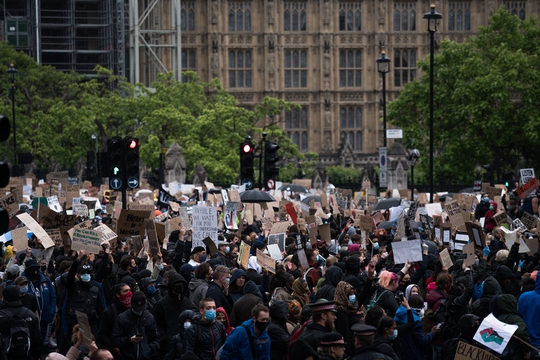Quit That Job: An Artworker’s Perspective
by
Louise Shelley
August 22, 2025
Featured in Dispassions: Class Struggle in Arts & Culture (#24)
An artworker reflects on hierarchy, organisation and community in the sector

inquiry
Quit That Job: An Artworker’s Perspective
by
Louise Shelley
/
Aug. 22, 2025
in
Dispassions: Class Struggle in Arts & Culture
(#24)
An artworker reflects on hierarchy, organisation and community in the sector
This is a text I’ve found difficult to approach. How is it interesting or useful to reflect on the multiple jobs I have held in the arts? After two decades working in it I know it is structurally fucked.1 What have I been seeking, hoping for, what have I learnt and equally why am I still working in this field? The sector, as many of us working in it know and have felt, is exclusionary, exploitative, and like all workplaces, prioritises reputation and survival over people. This is nothing new. To narrate my movement through these multiple spaces and to detail the structural and financial forces that render contradiction inevitable is to describe a working situation that is, in many ways, characteristic of most other employees. But maybe, in sharing again, as so many others have done and continue to do, we contribute to building something different. Or, at the very least, we make visible our experience as workers and form wider solidarities in collective struggle.
I moved to London in 2010 to work as a cultural worker, to find a curatorial role within the contemporary art scene. I had been working in arts spaces in Glasgow for five years, in commercial galleries, self-organising projects, and at the city’s centre for contemporary art, in roles from admin to programming. I realised that commercial gallery work wasn’t for me, and I began to value curating and organising as collaborative, critically engaged practice, learning with and from others. The context feels important to note, studying and living in Glasgow, a city with a deeply held sense of its political history and how this context shaped and influenced visual culture, community organising and DIY non-profit activity, including my own, was significant. It sharpens the urgencies for anti-capitalist, anti-racist, anti-patriarchal practice, offering an understanding of the entangled construction of the moments we live in, highly constructed by forces we usually have no power in. And so to form solidarity and collective action is the one life blood. When I moved to London the country was going through a financial crisis, acts of collective mobilisation occupied our public spaces and the workplace could not be separate despite its best efforts. The consciousness raising in the spaces, encounters, sites, spectres of these two cities in my twenties formed my entire relation to work and how to practice politically.
I was excited about the new people, ideas and histories I could learn from and work with, and after a period of multiple interviews and rejections and a few months on Job Seekers Allowance, I was offered a job. I was really excited about this role and the context, as I would be running a community programme at a non-profit, Arts Council funded space in North-West London, a neighbourhood filled with histories and acts of community organising and resistance. I worked here for eight years. As a part time job, I also had other jobs around it, a portfolio career of precarious contracts. The work I did there, the learning, the histories of that neighbourhood, the communities, the artists, the people I met formed a huge part of my political education in so many ways.
So much of the work required emotional labour, care, hosting, and developing trust. To form solidarities across difference, to build bodies of knowledge and collaboration, to form visual practice in dialogue that spoke to and made visible a process, an issue, that socialised a question. Practically it required more than the process of supporting an art commission - filling in someone’s housing benefit form, diverting budgets, cleaning someone’s house before a council inspection, sitting and talking to someone ill or lonely or homeless for hours, prioritising other people’s lives over your own. The job description could in no way outline what was required of me to do this work and there was little reciprocity from the organisation to support me, this work, or fully understand what it meant to build that knowledge and those relationships. The resulting artwork would often be extracted and celebrated away from all this invisible labour and the bodies involved in its actual production and soul.
It was outside of the arts organisation where I received the support and learnt the skills, and this came from others committed to collective campaign and organising work in the city, and to them I owe everything – how to organise intersectionally on the foundation of social reproduction came from the women’s refuge, the migrant groups, a homeless day centre, ESOL groups, school students, nurseries, the local family centre, youth clubs, a union of domestic workers. They asked what constitutes a political art practice, why the site of a gallery for activism/visibility, who is paid, what gets left behind?
One group in particular was a self- organised group of migrant domestic workers campaigning for better rights for overseas domestic workers in the UK. I worked with them, with many artists and designers—an alliance of solidarity to situate their experience in a long history of the dismissal of women’s work, of domestic labour, of women of colour, of migrant workers. An alliance formed where their energy for campaigning and action, despite their precarity and isolation as workers, left no excuse for artists and cultural workers not to unite and organise too.
Organising and working with a group of youth workers and secondary school teachers around the republishing of Schooling & Culture, a radical education journal published from a community darkroom in the neighbourhood that began in the late 1970s, was another example. It was a way of building solidarity and visual culture against a context of education reforms and neo-liberalism. Working on this journal was a process of strengthening solidarity between teachers, students and cultural practitioners by exploring politicised praxes of secondary school teaching in the face of increasing conservative toxicity. In 2017, a year after its publication, I became an hourly paid lecturer at UAL and I still exist on that same precarious contract now. These are the contracts that prop up many artists and cultural workers across the U.K. The building of work, relationships and knowledge for Schooling & Culture taught me the need to work concretely against the sterilisation of opportunities for encounters with known and unknown neighbours, workers, co-conspirators. Our struggles are interlinked.
The shaping of my work and thinking at this time through the work and writing of many others through Variant, Mute, specifically Marina Vishmidt and her writing on Social Reproduction, resonated with my workplace experiences in so many ways. Being tuned into this critique led me to move jobs multiple times, attempting to find a better context for working with the politics I held in community with others. In a way, each job raised my ambition of how it could and should function, each job resulting in leaving, quitting, or desiring better - better systems of arts organising for political agency, collaboration, coalition, sharing, creating, and imagining together.
However, the salary trap, and not being able to get over some overriding normative work ethic, has meant I keep trying to see what it means to work in different places, or keep taking new jobs in new contexts to see if it’s any different. These include non-profit contemporary art spaces (understanding the deeply problematic governance of charitable structures), an artist-led coop, an arts programme in a public transport business with a strong organising union, to unfunded models and small-scale precarious projects and organisations.
My experience in that first job in London, I know, is not exceptional; every artworker knows very well the dissonance between curatorial subjects that an institution presents and what is actioned, what is felt. This is also not unique to art spaces. Institutional functioning, governance structures, financial models and hierarchies of the workplace are not set up to support radical work, care, or equity in power nor in pay, yet they use this language in their programmes and work all the time. To desire or want them in these places is a waste of energy. So, we owe it to each other to demystify their constructions, and maybe that’s the point of writing this. This is nothing new, but it must continually be shared and in solidarity with others, eventually, a shift has to happen. We know we do this work for more than our waged labour relation, and we take and divest what we can but ultimately, who benefits the most? How do we move towards letting go of these places to build something new? There is power in the sharing of frustration amongst colleagues, the recognition and affirmation of the contradictions we were working under was something that kept us going but why did we never unionise? The scale, the illusion, the promise of something, the confusion of doing a job in a sector you love is a perfect storm to obscure a worker movement here.
Consistently, the thing to shout the loudest about, is that the charity model for these art spaces is not going to build any social movements. It is not going to decolonise itself. It is not going to make any radical statements. It is not going to be in solidarity with Palestine. It is not going to support its workers. It will present illusions of progress, and reform the corners of its unjust structures but only just, if at all. It won’t be accountable to its workers, its community. It will not admit fault. It will largely ignore our political moment or tie itself in knots until it can be reframed as a new programme strand. It works to avoid risk and, above all else, to support its continued existence. This sets up for curatorial gesture, not action - zero-hours contracts, unpaid and underpaid roles, work exploited for love, duty, and the promise of future reputation. We don’t need new arts charities!
The fact that most funders, Arts Council in particular, require this model to have their support says a lot. The charity model needs a hierarchy and, importantly, needs a board of trustees who are not workers on that charity’s payroll. The legal binding of this structure, the level of bureaucracy, means that as a worker you feel the contradiction. At a fundraising dinner a framework was put around my work where a wealthy patron could donate £300 to support one ‘community workshop’ and Anita Zabludowicz chipped in for a couple. You meet the Zionist funder supporting the programme on liberatory practices. The domestic worker of a patron serves you canapés while the guests celebrate an artworld prize for a project that speaks to the struggle of migrant domestic workers. Your colleague is a zero-hours visitor assistant that invigilates the exhibition on worker photography. You under pay the artist. You’re confused by the self-exploiting artist with access to private finance. Art market forces preside over your curatorial research. Processing the conflict of loving the work, the process, the neighbourhood and so many people, I learnt so much—but the structure always fails. I left after 8 years, completely exhausted!
Moving from this model of arts organisation to one that I understood as an artist-run cooperative was a hugely exciting step for me. What would it feel like to work without bosses, where everyone has one vote power and no one has more, what work could be done? A coop felt like it could politicise systems of pay in the art world and challenge hierarchies embedded within payment systems. It could by its very nature produce new approaches to remunerating the labour of artists, cultural workers, and organisers in support of collective political struggle. I was deeply invested in how this artist-led and cooperative model could develop new approaches and resist complicity with an unregulated, exploitative, and exclusionary art world.
Desiring a non-competitive, community-building, risk-averse space within an Arts Council-funded model, precarious and inherently hierarchical and artworld/market adjacent, was a flawed hope, in retrospect. Cooperation needs to be ideologically sewn into all relations, and sadly, this coop wasn’t able to enact cooperative politics in full, for many reasons: pragmatic, funding reasons and being a charity model adjacent to the coop and having a broad membership politically. However, there is an energy and a hope here, and I have so much admiration for the many people that continue to insist that this could support a politicised, equitable model. One of the last things that took place before I left was that the membership passed a motion I tabled at the AGM agreeing to a fee structure to pay artists fairly when invited into the public programme, an agenda item they agreed to table every year. We also made the migrant domestic workers group a key holder, to ask what it would mean to share this space with a worker led campaign group. However, my job here was temporary. It was a role given as a rarefied opportunity– a fellowship – but also a fixed-term, low-paid position, an accepted and normalised opportunity in the artworld that we compete for, this was not a position to build with. I learnt, for sure, but after an 18-month contract I was unemployed.
After a period of navigating freelance work, I took on a full time contract as a Curator working for the art programme at Transport for London. I was interested to work within a public service organisation who since the 1920s had worked with artists and designers as an integral part of their work. Artists alongside engineers, curators alongside train drivers, a socialist dream where art sat alongside transport provision, had a dedicated budget line, where I would work within a history of unionised transport workers. The resourcing of this programme was entirely different, free of competitive funding rounds and constant financial precarity, artists and workers could be paid well and projects fully supported. Understanding the working conditions of my colleagues working in stations and on the trains was a huge education, and has meant I understand more fully their resilience as a workforce and their struggle against increasing privatisation but also the power they can yield as a unionised body. I also understood through my own work there the full force of an oppressive corporate workplace and its incompatibility with any critical, political or enquiring voice whether that be from an artist or a worker there. When we proposed a simple internal bake sale for World Refugee Day our request was met with resistance and required sign off from the head of the business, the guidance being that we couldn’t be seen to take sides! The sign off required for an artwork that brought together Black and POC women and non-binary TfL staff into a space for conversation, writing, ritual and re-enactment towards a collective public performance was so laborious and hostile. Yet, a billboard for arms maker BAE systems has constant, unquestioned pride of place at Westminster station, a company making signifant profit from the Palestinian genocide. When I questioned the level of scrutiny of the artworks in comparison to a BAE advert that had been in place since 2013, my questions were dismissed and shut down. I left this job, and I was glad to, the secure contract and secure finances were nothing in the face of overwhelming corporate, conservative values that each day made any possible future here untenable.
I am still working, still drawing that small monthly wage, still over-working, while I figure out what to do, where to place my energy and time as a cultural worker. I have since moved back into a non-profit arts space in north-west London again. Despite having only been away from directly working in that environment for a few years, the state of public funding is truly desperate.
Navigating organisational finances for survival in a damaged and withdrawing publicly resourced landscape feels impossible. It passes on the damage, the precarity, the pressure, onto its workers every time, with small concessions to keep our faith intact, just about. This time I do feel like I am amongst a group of workers and a wider community where we share the same politics and ambitions for how we could do this work: both in and against.
How the institution works, or doesn’t work, is perhaps a moot point but how we work as caring, politicised bodies and workers is where I still have energy. Quit that job and share that experience. Who we are in community with, who we share and complain with, and provide support and care for is everything for organising and creating as cultural workers. What are we doing that is beyond the means of the dominant imagination? Across our roles and workplaces, don’t defend the actions of employers as a professional duty or hide in your role as a position of neutrality. Form alliances and collective resistance: Strike Outset, Boycott Zabludowicz, join the global strike for Palestine. Fall into community not despair - boycott, divest and sanction.
author
Louise Shelley
Subscribe to Notes from Below
Subscribe now to Notes from Below, and get our print issues sent to your front door three times a year. For every subscriber, we’re also able to print a load of free copies to hand out in workplaces, neighbourhoods, prisons and picket lines. Can you subscribe now and support us in spreading Marxist ideas in the workplace?
Read next

Cycling in the City
by
Alice Barker
/
Oct. 7, 2020

